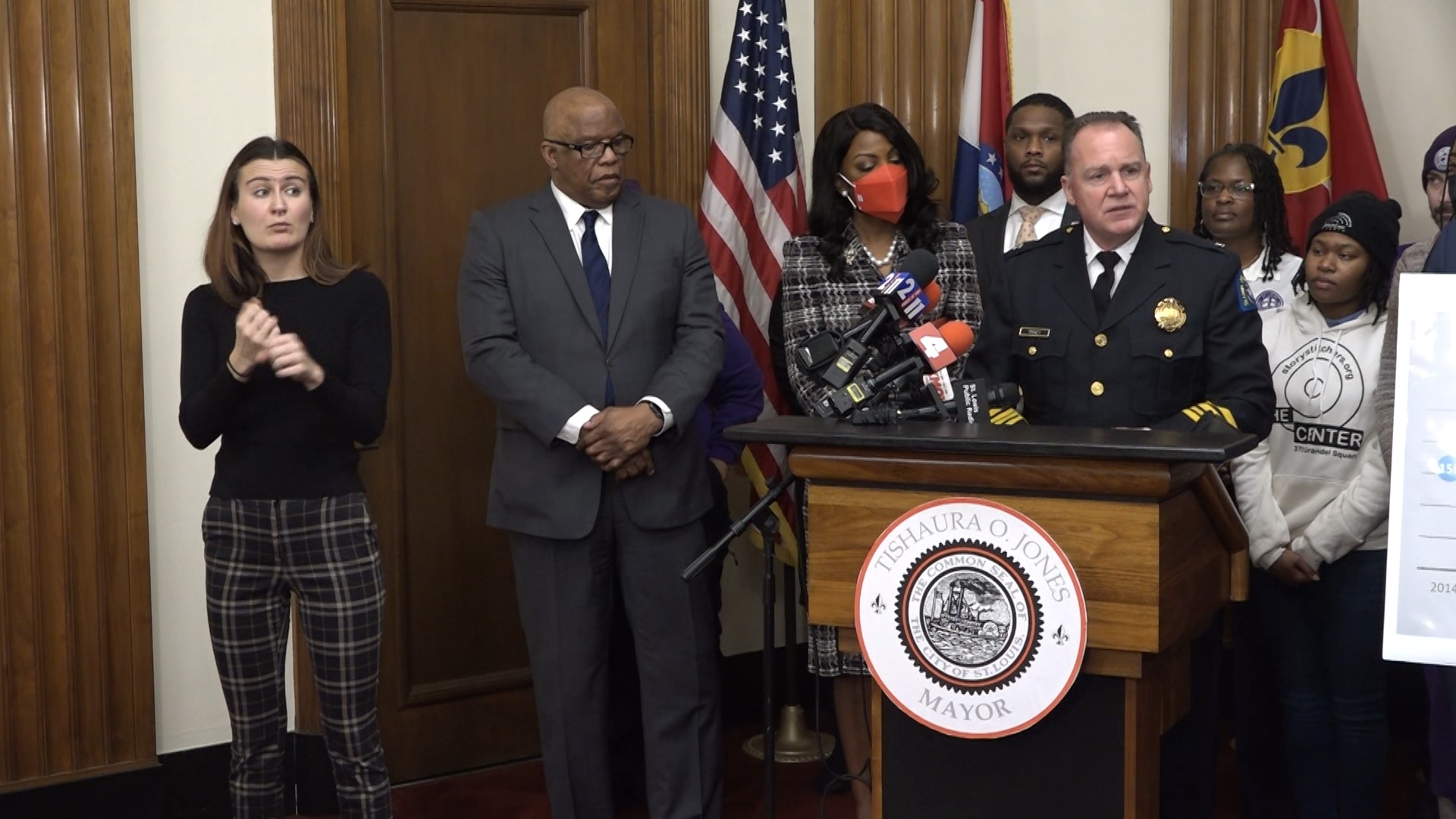ST. LOUIS, Missouri — Mayor Tishaura Jones marked the one-year anniversary of hiring police chief Robert Tracy at her 'State of Public Safety Report' in a news conference Tuesday morning.
"I don't know if you've heard this, but crime is down in the city of St. Louis," Jones said.
Standing alongside Chief Tracy and poster boards showing a homicide graph, Jones highlighted the city's reduction in annual homicides.
"Our homicides are at a 10-year low," she said, before telling the chief, "I look forward to working with you for many, many years to come."
Chief Tracy, Jones, and her public safety aides each took turns at the microphone describing the city's efforts to speed up 911 response times, improve detectives' homicide clearance rate, ramp up more consistent police officer recruiting efforts, and build out social programs to respond to medical or mental health emergencies.
"It's progress, none of this is a victory lap," Tracy said.
The chief, the first one hired from outside department ranks in city history, said he authorized the release of street-level crime data last Friday. In the few days since the department published the geographical crime incident data, expert researchers are already finding flaws in the numbers.
"We should be able to identify every single homicide in in the city," SLU Demographer Ness Sandoval said. "And the fact that we were not able to do that kind of raised some alarm bells."
Sandoval published the data in an interactive format on a website that tracks each incident of crime over the last three years. He claims something in the larger data set doesn't add up: 16 homicides that were initially listed in the city's total death toll are missing from the specific homicide categories.
"Every data set will have problems," he said. "I'm just surprised at the magnitude of the challenges that came out with this data set."
The official homicide death toll from 2021 to 2023 was 559, but only 543 of those murders were assigned to a specific category, leaving holes in the data.
"Well, I would love to know what murders he's talking about," Tracy replied, "because there can be, you know, how you define a murder sometimes... All homicides are not murders, but all murders are homicides."
Sandoval says the "missing" homicides could be incorrectly labeled or it's also possible the department listed them as "justified" homicides in self defense.
"I'm willing to look at that," Tracy said.
"This is the first time they've made this data public in three years," Sandoval told 5 On Your Side. "And so I think that they're starting to realize that they probably need to do a little bit of checking of data before it's made public."
"I'm a big believer in auditing those numbers because I am all about statistics and the integrity of the statistics," Tracy said. "So if he's found differences, let's find out what they are."
Either way, Tracy says the department's outdated data collection and website technology is due for an overhaul.
"I want a better informed public," he said. "I want people looking at it with a critical eye, because if we miss something, I want to know and I want to be able to have that conversation."
Tracy also fielded questions about the recent police vehicle that crashed into a south city bar three weeks ago.
"They made a mistake," he said. "They made a mistake. And we will review that. And just because they made a mistake doesn't mean we don't hold them accountable."
"I'm glad those officers are alright," the chief said. "I feel bad and I'm sorry that that their establishment got hit and they got the damage that that happened to that place. Nobody wants to see that."
Tracy also took some heat during the news conference for waiting so long to address the public himself, but ultimately defended his decision to sidestep the spotlight and let other captains take the stage, calling it "executive development" for his up-and-coming brass.
He also said one internal investigation into at least one officer will not conclude in a finding of "no fault."
Tracy hid behind a state transparency law as he explained his decision to not release body camera video of the incident. He claims the department can't release that video until after the criminal investigation is over, and argued that decision is now out of his hands because they already referred it to prosecutors for misdemeanor charges.
"There is a criminal investigation and it's not my job right now," Tracy said. "After a warrant's sworn out, an assistant circuit attorney has seen that and preferred warrants and charges on the actions of that individual. So it's already in the criminal justice system."
Tracy said he won't necessarily use that same standard in every body cam video case in the future.
"It would have to go case-by-case basis," he said.

